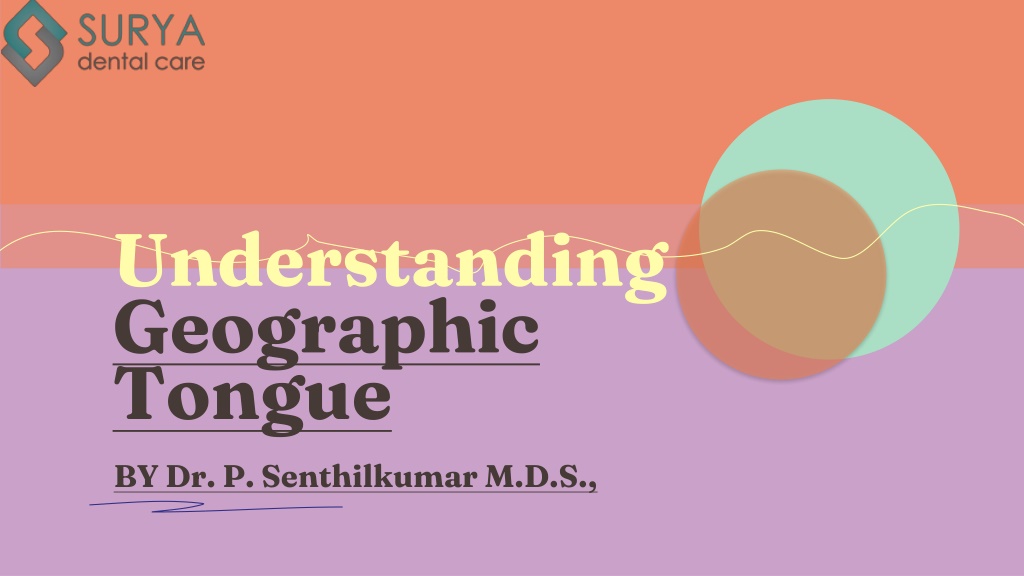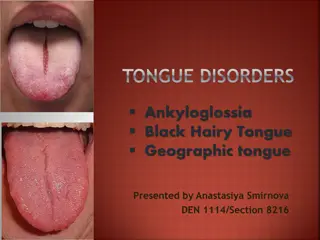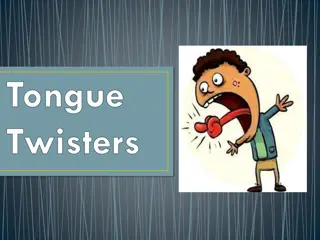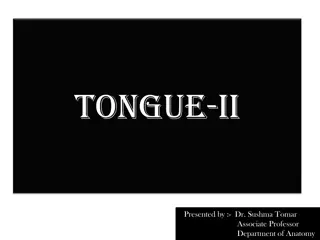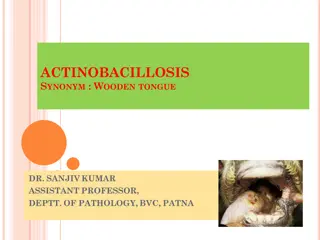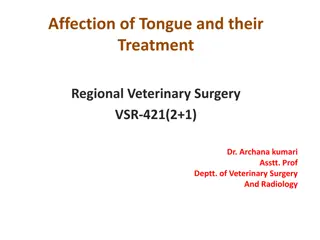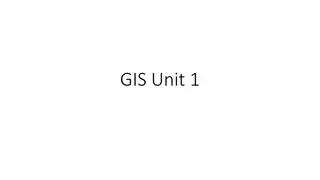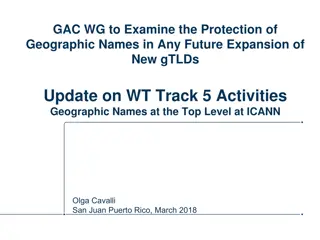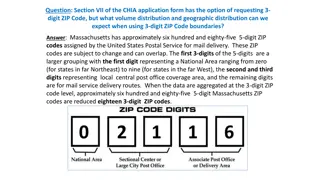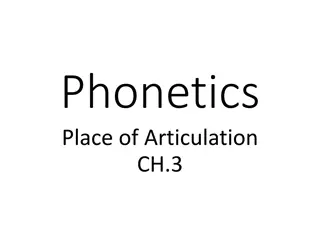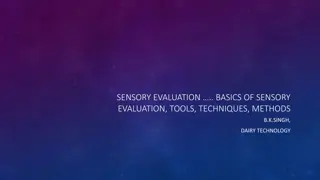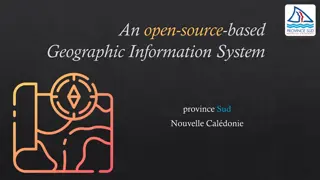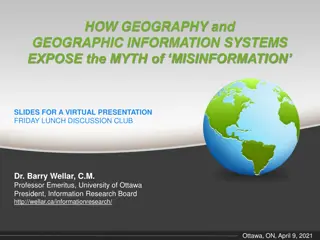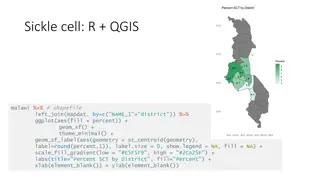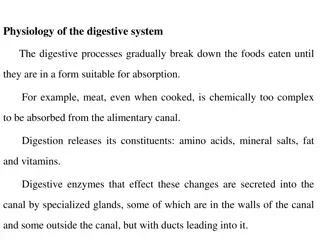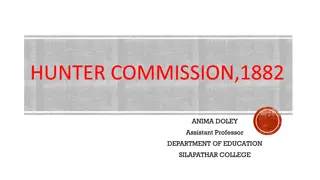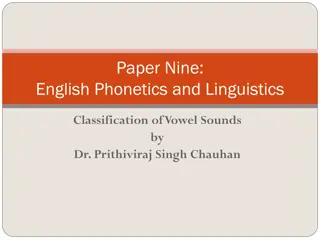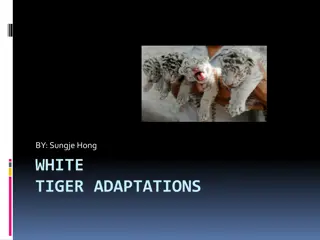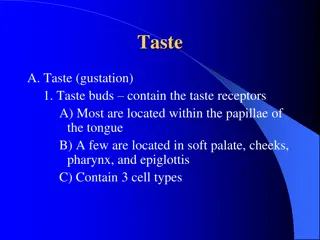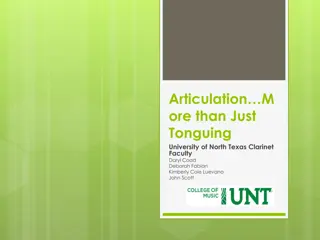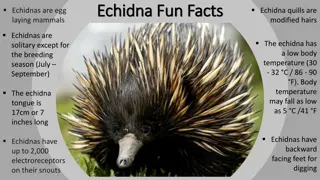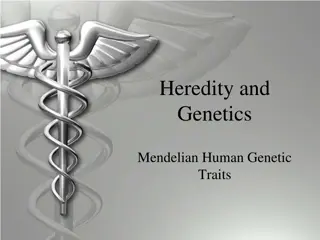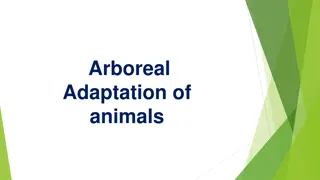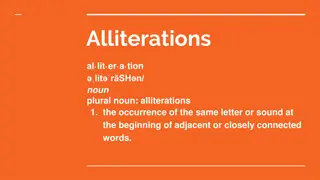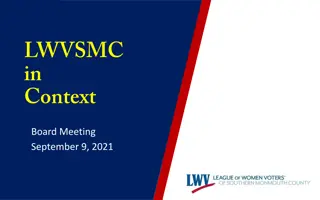what is Geographic Tongue and how does it look
Geographical tongue is an non-contagious condition that provides an atypical, map-like structure to the tongue. A detailed note on this problem is given here. For More Info Visit: // /what-is-geographic-tongue/
Download Presentation

Please find below an Image/Link to download the presentation.
The content on the website is provided AS IS for your information and personal use only. It may not be sold, licensed, or shared on other websites without obtaining consent from the author. Download presentation by click this link. If you encounter any issues during the download, it is possible that the publisher has removed the file from their server.
E N D
Presentation Transcript
Geographic Tongue Understanding Geographic Tongue Geographic Tongue BY Dr. P. Senthilkumar M.D.S., BY Dr. P. Senthilkumar M.D.S.,
Introduction Introduction to Geographic Tongue Geographic Tongue, also known as migratory glossitis or wandering rash, is a benign condition characterized by irregular, map-like patterns on the surface of the tongue. This condition is not a cause for concern, as it is generally harmless and does not pose a threat to an individual's overall health. Although the exact cause remains unclear, it is important to recognize that Geographic Tongue is a common occurrence and typically requires no specific treatment.
Symptoms Symptoms of Geographic Tongue Characteristic Appearance Occasional Discomfort Irregular Patterns Common Condition Geographic tongue presents as smooth, red patches on the surface of the tongue, resembling a map. These patches can vary in shape and size. The patches often have a white or yellowish border and can change appearance over time, sometimes disappearing and reappearing. Some individuals may experience mild discomfort or sensitivity, particularly when consuming certain foods. Geographic tongue affects approximately 2- 3% of the population and may be an initial indicator of celiac disease.
Overview Causes and Triggers Potential Causes of Geographic Tongue Stress is believed to exacerbate the condition, leading to flare-ups. menopause Hormonal changes, particularly during puberty or menopause, may trigger symptoms. Dietary factors such as deficiencies in vitamins B and iron are associated with geographic tongue. Dietary Triggers Spicy foods can irritate the tongue and worsen symptoms temporarily. Acidic foods, like citrus fruits, may lead to discomfort and sensitivity. Salty foods are also known to trigger flare-ups in some individuals.
Geographic Tongue Impact of Spicy Food Effects of Spicy Foods Potential for Swelling Consulting a Dentist Spicy foods can trigger discomfort in individuals with Geographic Tongue, leading to sensations of burning or irritation on the tongue's surface. In some cases, consumption of spicy foods may result in swelling of the tongue, complicating swallowing, speaking, or eating. If symptoms such as pain or swelling persist after eating spicy foods, it is essential to consult a dentist for proper evaluation and management. dentist
Treatment Managing Geographic Tongue Pain Relief Options Avoiding Irritants Identifying and avoiding foods that trigger symptoms, such as spicy, acidic, or hot items, can help manage discomfort. Over-the-counter pain relievers such as ibuprofen or acetaminophen can help alleviate discomfort associated with Geographic Tongue. Use of Antiseptic Mouth Rinses Maintain Oral Hygiene Oral Hygiene Antiseptic mouth rinses can reduce inflammation and promote healing of the tongue's surface, providing temporary relief from symptoms. Regular brushing and flossing, along with gentle tongue scraping, can enhance oral health and mitigate discomfort. Zinc Supplements Consulting a Healthcare Professional Zinc supplements may assist in reducing symptoms for some individuals, though it is essential to consult a healthcare provider before starting any supplement. If symptoms persist or worsen, consulting a dentist or healthcare professional is crucial for further evaluation and management.
Geographic Tongue When to Consult a Dentist Consult a dentist if you experience persistent lesions on the tongue that do not resolve within 10 days. Individuals with a grooved, wrinkled, or fissured tongue should seek dental advice as these conditions may be linked to Geographic Tongue. If you have a Vitamin B deficiency, it is advisable to consult a dentist to rule out other oral health issues that might exacerbate symptoms. Patients with psoriasis or other skin conditions should also discuss the presence of Geographic Tongue with their dentist for proper management. Persistent pain or discomfort in the tongue, especially after consuming certain foods, warrants a visit to a dental professional.
Summary Geographic tongue is a benign and non-harmful condition that typically requires no medical treatment. Geographic tongue, also known as benign migratory glossitis, features irregular, map-like patterns on the tongue's surface. This harmless condition usually does not cause significant discomfort. While some may experience temporary sensitivity after consuming spicy or acidic foods, medical treatment is rarely necessary. Those with persistent pain should consult their dentist for evaluation and management.
FAQ Frequently Asked Questions Geographic tongues appear as smooth, red patches that can change shape and size over time, often with a white or yellowish border. The patches result from the loss of the small bumps (papillae) on the tongue's surface, giving it a map-like appearance.
T Thank You! hank You! https://www.suryadentalcare.com/ https://twitter.com/CareSurya https://www.facebook.com/suryadentaltrichy https://www.instagram.com/suryadentalsenthil/
